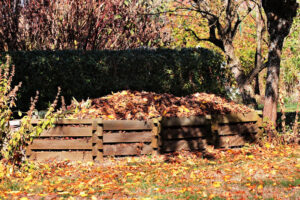As the sun settles lower in the horizon and the air begins to cool, October presents an excellent opportunity for Florida gardeners to sow a new array of crops that thrive in the subtropical climate. In this segment, we’ll dive into three remarkable plant options to consider for your October garden: Arugula, Asian Cabbages, and Bush Beans. Each of these plants offers unique flavors, versatility in use, and adaptability to Florida’s unique growing conditions.
Arugula

Arugula, or Eruca sativa, is a leafy green that has gained popularity for its peppery flavor and numerous health benefits. October is the ideal time to plant arugula in Florida, as the cooler temperatures contribute to its quick germination and vigorous growth. This salad green thrives in well-drained soil rich in organic matter; ensuring good soil health can dramatically enhance flavor and yield.
To plant arugula, select a spot in your garden that receives at least 4-6 hours of sunlight daily. Direct sow seeds about ½ inch deep and space them roughly 1 inch apart. Given Florida’s tendency for sporadic rainfall, consider implementing a drip irrigation system to keep the soil consistently moist without waterlogging. Harvest young leaves around 21 days after planting for a milder taste, or allow the plant to mature fully for a spicier flavor profile that complements a variety of dishes.
Moreover, arugula is not only quick to grow but also a prolific producer. You can enjoy multiple harvests from one planting as new leaves continuously sprout from the base. For those looking to maximize their gardening space, arugula can be strategically interplanted with slower-growing crops, taking advantage of the cooler October temperatures and gaining a head start before winter sets in.
Asian Cabbages
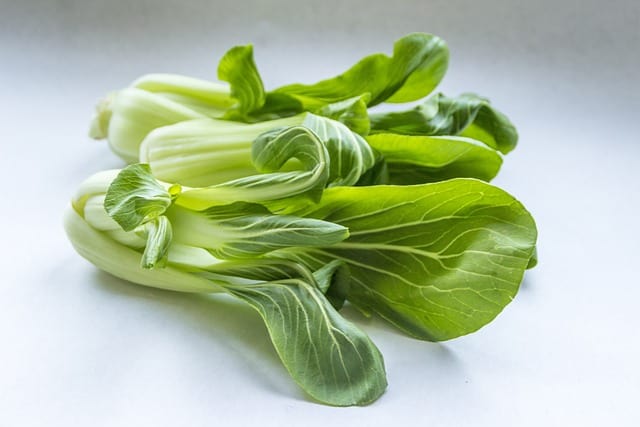
Asian cabbages encompass a diverse group of leafy vegetables that include varieties such as bok choy, napa cabbage, and mizuna. These leafy jewels are perfect for October planting in Florida, as they flourish in the moderate climate and enriched soil typical of this time of year. Their ability to thrive in cooler temperatures makes them an excellent choice to transition from the summer heat to the cooler autumn months.
When planting Asian cabbage, start with well-amended soil to ensure robust growth; a mixture of compost and aged manure works wonders. Seeds can be directly sown about ¼ to ½ inch deep, or you can opt for starting them indoors and transplanting seedlings later. Bok choy, for instance, can be ready for harvest as early as 30 days after planting, making it a rewarding option for gardeners eager to enjoy a fresh harvest.
What sets Asian cabbages apart are their resilience against pests and diseases. Regular applications of neem oil or insecticidal soap can help combat potential insect threats like aphids or cabbage worms. Additionally, intercropping with pest-repelling plants like marigolds can improve garden health while also adding vibrant color to your plot.
The culinary versatility of Asian cabbages makes them a staple ingredient in stir-fries, salads, and soups, allowing your October harvest to greatly enrich your meal repertoire, bringing a taste of Asian cuisine seamlessly into your home.
Beans, Bush
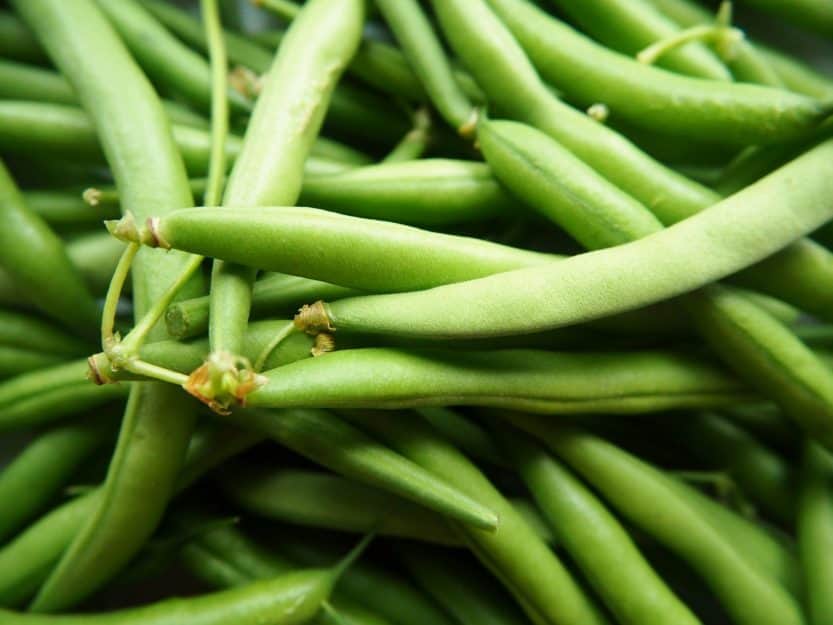
Bush beans, particularly in their many flavorful varieties, are a perfect selection for your October garden in Florida. As a warm-season crop that thrives even as temperatures drop slightly, they provide a satisfying yield in a short growing season. Bush beans are compact and low-growing, making them ideal for smaller gardens and container gardening.
One of the appealing aspects of bush beans is their resilience. They can typically withstand the fluctuations in weather that accompany Florida’s autumn. Plant seeds directly in the soil approximately 1 inch deep, ensuring adequate spacing of 2-4 inches between seeds. This spacing promotes proper air circulation, preventing mold and diseases. Water them consistently to keep the soil evenly moist, especially during dry spells.
Harvest time for bush beans generally occurs around 50-60 days after planting, allowing you to enjoy fresh produce right before winter. Beans are not only delicious but also tremendously beneficial for soil health. As legumes, they work symbiotically with nitrogen-fixing bacteria to improve soil fertility, making them a brilliant addition to crop rotation and overall ecosystem health within your garden.
Moreover, bush beans can easily be incorporated into your meals. Use them in salads, sauté them as a crunchy side dish, or create hearty stews. Their quick growth and ease of care make them particularly rewarding for gardeners of all experience levels.
Southern Peas

Southern peas, commonly referred to as cowpeas or black-eyed peas, are an essential crop in Southern agriculture and are ideally suited for fall planting in Florida. They thrive in the warm, humid conditions of an early Florida autumn and are also remarkably forgiving for novice gardeners. These legumes provide both delicious pods and nutrient-rich seeds, making them a dual-purpose choice.
To plant Southern peas, select a sunny location with well-drained soil. Prepare the soil by tilling and incorporating organic matter, which helps retain moisture while giving the peas a nutrient boost. Sow the seeds about 1 inch deep and space them 2-4 inches apart to allow for ample airflow and growth.
Southern peas are particularly notable for their drought tolerance, a beneficial trait when sudden shifts in weather occur during Florida’s transition from summer to fall. These plants flourish with minimal maintenance, but applying a light fertilizer can enhance growth and yield. As they grow, their vibrant green foliage is not only beautiful but also attracts beneficial insects, which aid in pest control.
In terms of culinary use, Southern peas are a Southern staple, elevating dishes like Hoppin’ John or gumbo. Freshly picked, they can be prepared as a flavorful side or added to salads, making them a versatile choice for any kitchen. In addition to their palatability, they enrich the soil with nitrogen through a symbiotic relationship with soil bacteria, enhancing soil health for subsequent crops.
Beets

Beets are a fantastic option for October planting in Florida, combining visual appeal and nutritional benefits in one hearty vegetable. This cool-season crop thrives as temperatures begin to cool, and beetroot is renowned for its earthy sweetness and vibrant color. Moreover, both the roots and greens are edible, allowing for a sustainable and resourceful approach to gardening.
When planting beets, choose a sunny spot with fertile, well-drained soil. Sow the seeds about ½ inch deep and space them 1-2 inches apart to allow room for the root development. Florida gardeners should keep the soil consistently moist but not soggy, which will promote healthy germination. Since beet seeds are actually clusters of seeds, thinning out seedlings when they are about 2 inches tall is essential to allow room for optimal growth.
One compelling aspect of beets is their rapid growth rate; they can be ready to harvest in just 50-60 days. Their striking red, golden, or striped varieties add an aesthetic touch to both gardens and plates. Besides their culinary flexibility as a roasted, pickled, or even juiced vegetable, the greens are also palatable and nutritious, offering a savory addition to salads or sautéed dishes.
Engaging in succession planting can yield a continual harvest. By staggering your sowing every few weeks throughout October, you will enjoy fresh beets over an extended period, maximizing the use of your garden plot.
Broad Beans
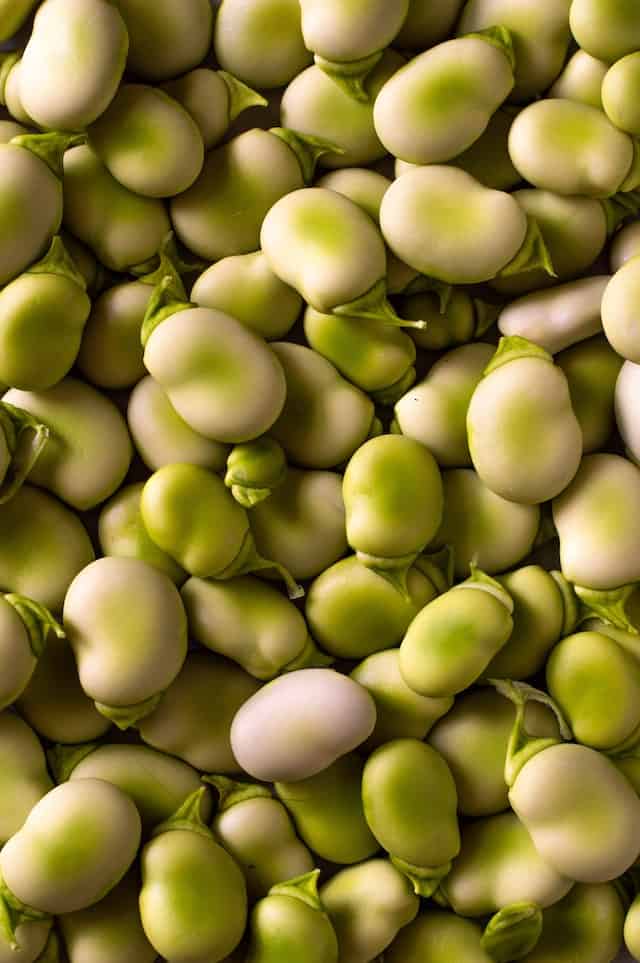
Broad beans, or fava beans, are an exciting choice for gardeners looking to experiment with unique crops in Florida during the fall planting season. These legumes tolerate cooler temperatures and can thrive during the mild Florida winters, making them a harmonious addition to your October gardening efforts.
Planting broad beans is straightforward. They prefer rich, well-drained soil that has been amended with organic matter. Work the soil to a depth of around 12 inches, mixing in compost to enhance drainage and nutrient content. Sow the seeds 2-3 inches apart, about 1-2 inches deep, which allows them to establish a robust root system.
What sets broad beans apart is their versatility. Not only do they enrich the soil through their nitrogen-fixing properties, but they are also excellent companions for crops like tomatoes and corn. Their blossoms attract pollinators, promoting overall garden health and productivity.
Broad beans can be harvested when the pods are young and tender or allowed to mature fully for dried beans. Their nutty flavor makes them a desirable ingredient in various cuisines, from garlic sautéed dishes to hearty stews and salads. With a short window before the Florida climate turns warm again, planting broad beans in October rewards gardeners with bountiful and versatile harvests.
Broccoli

Broccoli is a nutritional powerhouse that boasts high levels of vitamins C and K, fiber, and a wealth of antioxidants. October is the perfect month to plant broccoli in Florida, as cooler weather promotes optimal growth and flavor development. This cool-season crop can be grown either by direct seeding or starting transplants in pots before moving them to the garden.
When preparing to plant broccoli, choose a sunny spot in your garden with well-drained, fertile soil. Broccoli prefers soil enriched with compost because this contributes essential nutrients. Sow seedlings about 18 inches apart, giving them ample space to develop into robust plants.
One of the keys to successful broccoli cultivation is consistent moisture; aim to water your plants deeply, ensuring the soil never completely dries out. This can also contribute to tender and flavorful florets. Fertilizing every few weeks with a balanced organic fertilizer can further enhance growth, especially during the rapid growth phase when the heads begin to form.
Harvest broccoli when the heads are still tight and before the yellow flowers begin to bloom, which typically occurs about 60-90 days after planting. Moreover, the leaves of the broccoli plant are also edible and can be used in salads or as a nutritious sauté, adding extra value to your crop.
Cabbage
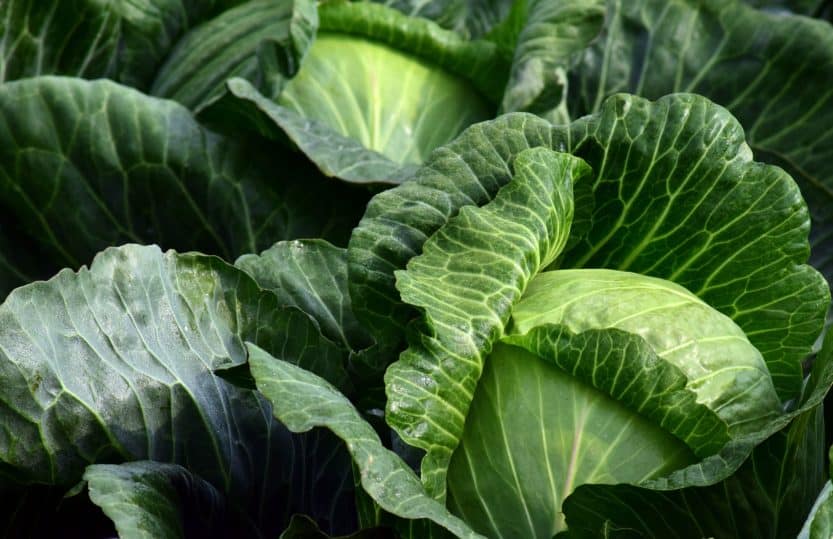
Cabbage, with its crisp texture and versatility, is another excellent candidate for October planting in Florida. This hardy vegetable thrives in the cooler temperatures of fall and is well-suited for the mild winter climate that follows. Cabbage varieties come in a multitude of colors and sizes, allowing for visual appeal and flexibility in the kitchen.
To successfully plant cabbage, select a site that receives full sunlight and prepare well-drained, rich soil. Amend the soil with compost and a slow-release fertilizer to ensure nutrient availability. Sow seeds about ¼ to ½ inch deep, spacing them 12 to 24 inches apart, as cabbages can grow quite large.
Cabbage plants appreciate consistent moisture, so regular watering is crucial, particularly during drier spells. A layer of mulch can help conserve moisture and suppress weeds. As the cabbage begins to form, make sure to keep an eye out for common pests, like aphids and caterpillars, which are attracted to the plants; using row covers or organic pest deterrents can help protect your crops.
Harvesting cabbage occurs when heads are firm and dense; this usually takes around 70-100 days from planting. Cabbage is incredibly versatile in cooking; it can be enjoyed raw in slaws, fermented as sauerkraut, or cooked in a wide array of dishes, making it a staple in various cuisines around the world.
Carrots
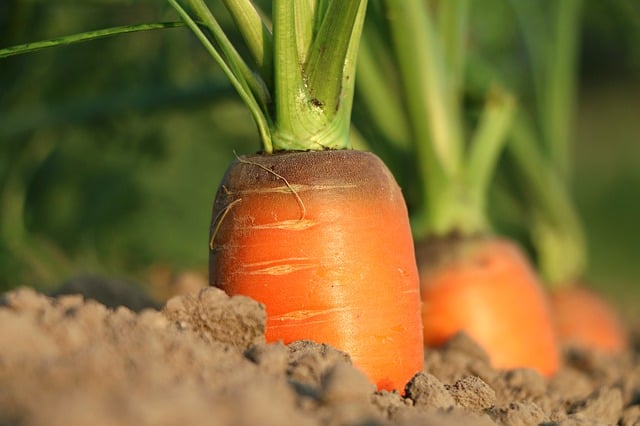
Carrots are a delightful root vegetable that can add wonderful texture and sweetness to meals, and they thrive when planted in October in Florida. These orange jewels grow well in the cooler temperatures and can be a rewarding crop for both new and experienced gardeners.
When growing carrots, it’s essential to choose a spot with loose, well-draining soil free of large rocks or debris that can hinder root development. Amend the soil with compost to enhance drainage and nutrient availability. Sow carrot seeds directly into the soil, about ¼ inch deep and spaced 1-2 inches apart. Since carrots can take some time to germinate—often around 14 to 21 days—keeping the soil consistently moist is critical for successful germination.
Carrots can be thinned as they grow to allow for better spacing, ideally leaving them 2-4 inches apart when fully matured. Furthermore, carrots benefit from a layer of mulch, which helps retain soil moisture and regulate temperature.
Typically, carrots can be harvested around 60 to 75 days after sowing, but their sweetness often improves after they’ve been exposed to a light frost. Carrots are extraordinarily versatile, whether enjoyed raw in salads, roasted, or included in savory stews. Additionally, their lush greens—often overlooked—can be used to make pesto or added to other dishes for a nutritional boost.
Cauliflower
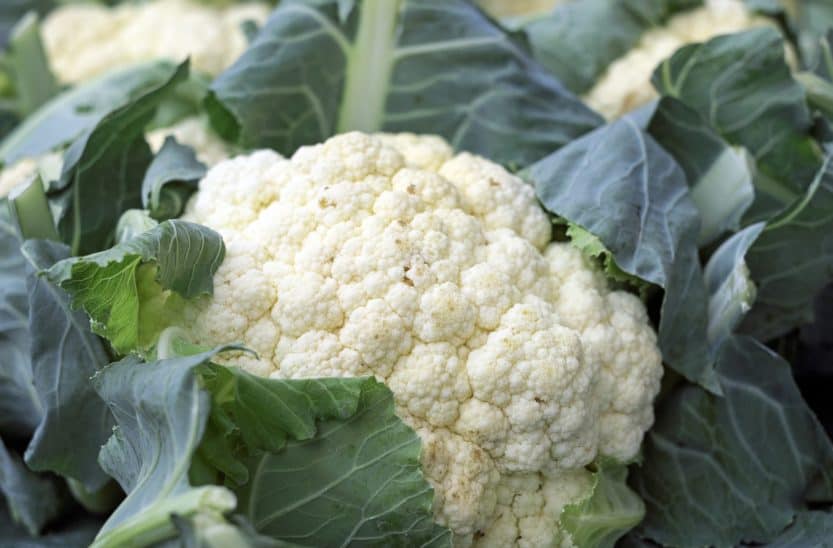
Cauliflower is a versatile, nutrient-rich vegetable that’s gaining popularity in many kitchens across Florida. Known for its creamy white florets and subtle flavor, cauliflower thrives in the cooler conditions of October and can be a delicious addition to your fall gardens. Its adaptability to Florida’s climate allows gardeners to enjoy multiple harvests as long as they are planted at the right time.
Planting cauliflower starts with selecting a well-drained, fertile location in your garden that receives full sun. The soil should be amended with compost to enhance fertility and improve moisture retention. Begin by sowing seeds about ¼ inch deep and spacing them 18 inches apart to allow room for the large heads to grow. For those who prefer the advantages of starting indoors, you can transplant seedlings after a few weeks when they reach around 4-6 inches tall.
Regular watering is crucial for cauliflower, as it is sensitive to drought. To promote the development of tight, dense heads, consistent moisture levels should be maintained. Applying a balanced fertilizer every few weeks can also bolster growth, especially during the plant’s rapid growth phase.
Cauliflower heads can typically be harvested 60-100 days after transplanting, depending on variety. It’s best to pick the heads before they begin to flower, ensuring a tender and flavorful crop. Cauliflower can be enjoyed cooked, roasted, or eaten raw, and it also stands out as a fantastic alternative in low-carb and gluten-free dishes like cauliflower rice or pizza crust.
Celery
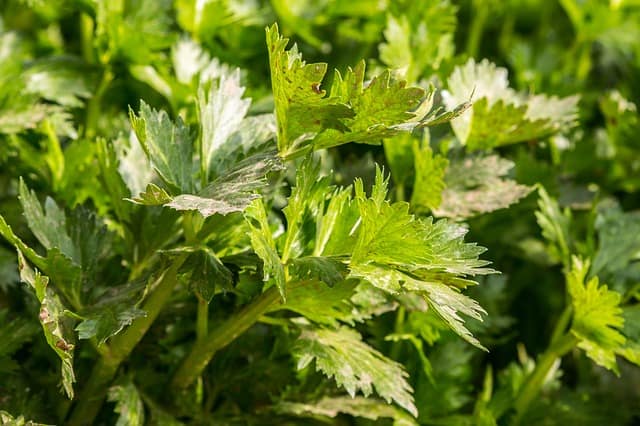
Celery (Apium graveolens) is a crunchy, flavorful addition to any garden and an essential ingredient in a variety of recipes. October is an ideal time to plant celery in Florida, as this cool-season crop thrives in moderate temperatures and can withstand light frosts, making it well-suited for fall and winter gardening.
Start by selecting a site that receives partial shade, as celery can be sensitive to extreme heat. Prepare your garden bed with nutrient-rich soil; incorporating compost not only improves the soil’s texture but also increases its fertility. Sow seeds ¼ inch deep in rows, spacing them about 10-12 inches apart to allow the plants room to reach their full height of about 12-18 inches.
Moisture is particularly important for celery, as it is a water-loving plant. It’s best to keep the soil consistently moist but not waterlogged. Consider using mulch to help retain moisture and keep weed pressure at bay. Fertilizing with a balanced, slow-release fertilizer during the growing season can also lead to healthier plants and better yields.
Celery can usually be harvested after about 90-100 days, typically when the stalks are thick and firm, yet before they begin to bolt. Known for their crispness and refreshing taste, celery stalks are great for snacking, used in salads, or as a base for soups and stews. Plus, the leaves can be chopped and added to dishes for additional flavor.
Chives
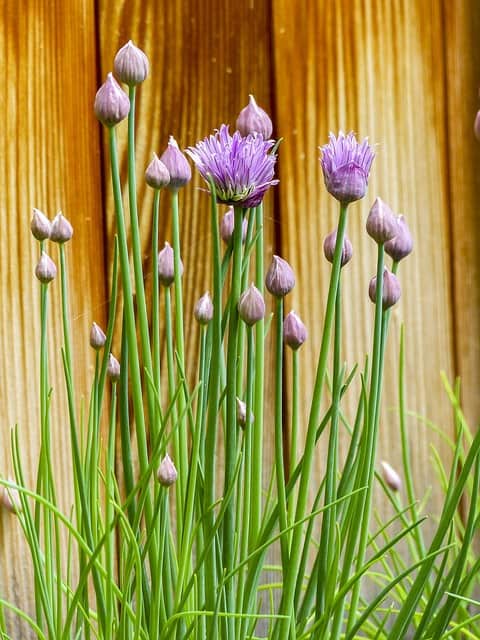
Chives (Allium schoenoprasum) are a perennial herb that adds a mild onion flavor to dishes, and they thrive in Florida’s climate when planted in October. Their delicate purple flowers are not only a beautiful addition to any garden but also attract beneficial pollinators. Growing chives is easy and rewarding, making them a great choice for both novice and experienced gardeners.
When planting chives, choose an area that receives full sun or partial shade. The soil should be well-drained, as chives do not tolerate soggy conditions. You can start chives from seeds or by dividing existing plants. If broadcasting seeds, space them about 6-12 inches apart or plant them in containers for easier maintenance.
Watering is essential, particularly during dry spells, but be careful not to overwater. Chives benefit from regular fertilization with an organic fertilizer to encourage lush growth and plentiful harvests. As these herbs grow, they can reach a height of 12-15 inches and can be snipped back frequently without harming the plant, promoting bushier growth.
Chives can be harvested as soon as they reach a desirable length, usually around 8-12 weeks after planting. Their mild flavor makes them an excellent topper for baked potatoes, soups, and salads, and they serve as a versatile garnish for a wide range of dishes. In addition to their culinary uses, chives contain vitamins A and C, as well as a variety of antioxidants.
Collards
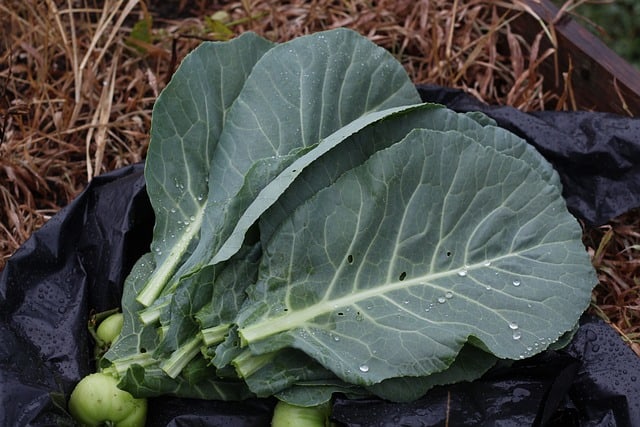
Collards are a staple leafy green in Southern cuisine, known for their robust flavor and impressive nutrient profile rich in vitamins A, C, and K, as well as calcium. These hardy greens are perfect for October planting in Florida, where the cooler weather promotes healthy growth and provides a bountiful harvest through the winter.
When planting collards, select a site that receives full sun and has nutrient-rich, well-draining soil. Preparing the soil with compost or well-rotted manure not only enriches it but also aids in achieving the right texture for optimum growth. Sow the seeds about ½ inch deep, spacing them 12-24 inches apart to allow for ample growth of these leafy giants.
Consistency in watering is key, as collards thrive in moist conditions. Mulching around the plants can help retain soil moisture and suppress weeds that compete for nutrients. Collards are relatively pest-resistant, but vigilance is necessary; common pests include aphids and caterpillars. Using organic repellents or row covers can help protect your plants as they grow.
Typically, collards are ready to harvest about 60-90 days after planting. You can harvest the outer leaves first as they mature while allowing the inner leaves to continue to develop. Collards can be enjoyed cooked, commonly found in Southern dishes like collard greens, or they can be used fresh in salads or as a flavorful addition to wraps and sandwiches.
Cucumbers
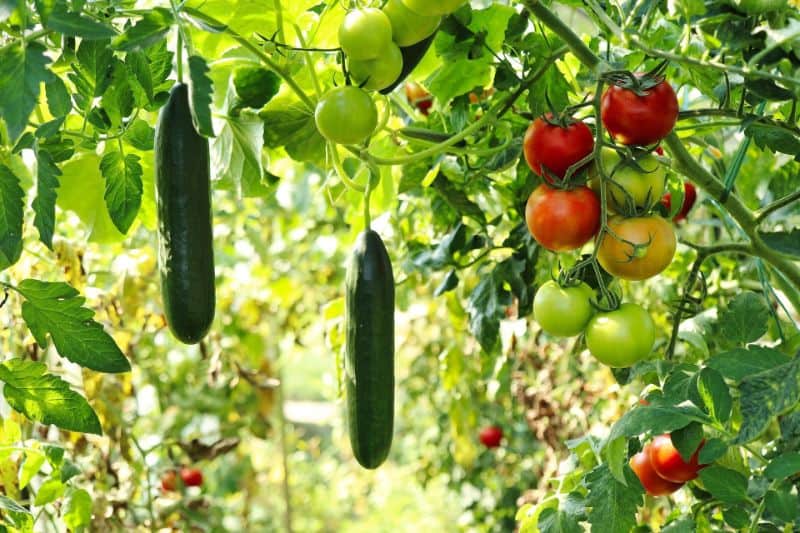
Cucumbers are one of the most refreshing and versatile vegetables, making them a beloved choice for summer salads, snacks, and pickles. However, planting cucumbers in October allows gardeners to dominate the early winter season with this fast-growing crop. In Florida’s unique climate, October planting can lead to bountiful harvests before the cooler temperatures intensify.
When planting cucumbers, it’s crucial to choose a location that receives full sun and has well-draining, fertile soil. Enriching the soil with compost creates a nutrient-rich base for strong plant growth. Sow seeds directly into the garden about 1 inch deep, spacing them 18-36 inches apart, depending on whether you plan to grow vining or bush varieties.
Watering cucumbers regularly is essential, especially during dry spells, as these plants require consistent moisture to thrive. It’s beneficial to apply a layer of mulch to help retain moisture and minimize weeds. For vining varieties, consider using trellises to support growth; this not only saves space but promotes airflow around the plants, which can help reduce disease.
Cucumbers can typically be harvested about 50-70 days after planting, depending on the variety. They should be picked while they’re still firm and bright green; harvesting regularly encourages continued production. Fresh cucumbers can be enjoyed raw, pickled, or blended into refreshing beverages, making them an excellent choice for any garden.
Daikon
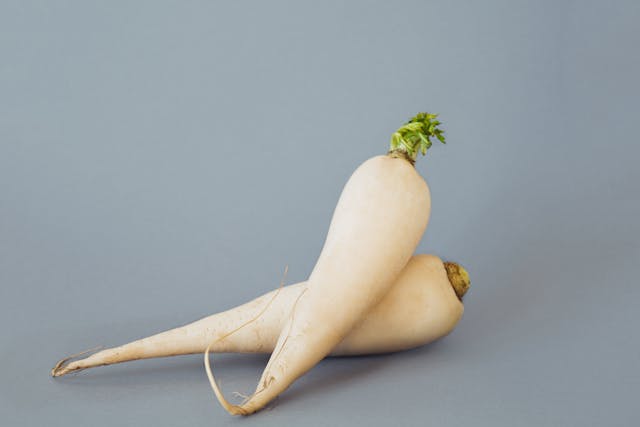
Daikon radishes are a unique and flavorful addition to the fall garden, cherished for their crisp texture and mild taste. This fast-growing root vegetable is often used in Asian cuisine and serves as a fantastic ingredient in salads, stews, and kimchi. Daikon thrives in the cooler temperatures of October, making it an ideal planting option for Florida gardeners.
To successfully grow daikon, choose a well-drained site with full sun exposure. Prepare the soil by tilling it to a depth of at least 12 inches, as daikon radishes can grow long and deep; this ensures they have ample space to develop. Sow seeds about ½ inch deep, spacing them 2-4 inches apart to allow for individual growth.
Daikon radishes benefit greatly from consistent moisture, so be diligent about watering especially during drier conditions. Mulching around your plants can help trap moisture in the soil while suppressing weeds. Fertilizing the soil with a balanced fertilizer during the growing season can promote vigorous growth and improve root size.
Typically, daikon radishes are ready to harvest within 60-70 days after planting. They can grow quite large; harvesting them while they are still young—around 8-12 inches long—will yield the best flavor and texture. These radishes can be sliced into salads, pickled for a zesty side dish, or added to stir-frys for an extra crunch, making them a versatile crop for culinary exploration.
English Peas
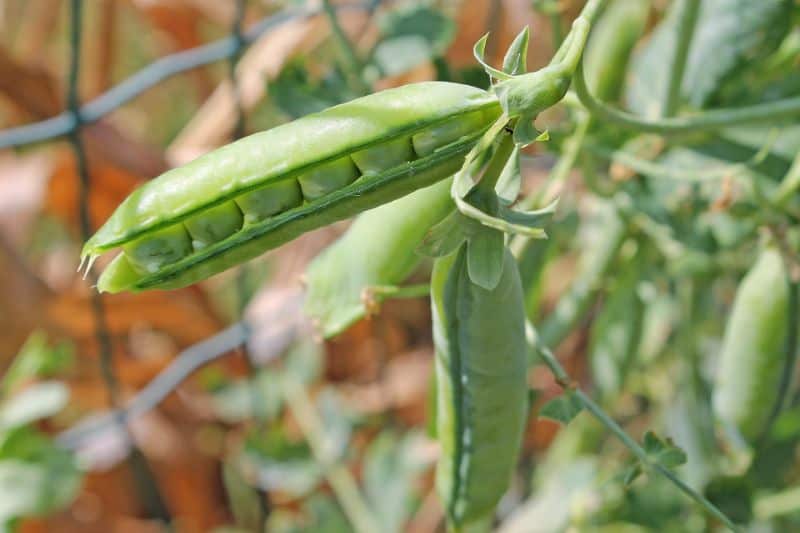
English peas are a delightful addition to any garden, known for their sweet, tender pods and vibrant green color. These cool-season crops are ideal for planting in October, as they flourish in the moderate temperatures of fall and early spring. English peas are not only nutritious—packed with vitamins A, C, and K—but they also contribute to soil health by fixing nitrogen, benefiting subsequent crops.
When planting English peas, select a location with full sun and well-draining soil. The ideal pH range for peas is between 6.0 and 7.0. To prepare the soil, incorporate compost or well-rotted manure, which contributes to nutrient availability. Sow seeds about 1-2 inches apart and plant them 1-2 inches deep, ensuring they are adequately spaced for growth. If using a trellis, place it alongside the planting area to support climbing varieties.
English peas thrive with consistent moisture, particularly during their flowering and pod formation stages. A layer of mulch can help retain soil moisture and suppress weeds, allowing your peas to concentrate on growth. Fertilizing with a balanced organic fertilizer can also promote healthier plants.
Typically, English peas can be harvested in about 60-70 days when pods are firm and plump. They can be enjoyed fresh, steamed, or added to stir-fries, salads, and pasta dishes, bringing a burst of sweetness to each bite. Additionally, fresh peas are a fantastic source of protein and fiber, making them a wholesome choice for any meal.
Fennel
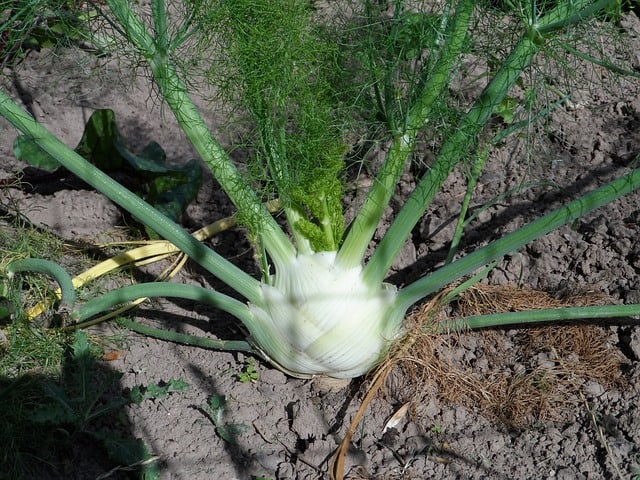
Fennel is a unique and versatile perennial herb known for its aromatic flavor and feathery leaves. As both a culinary herb and vegetable, fennel makes an excellent addition to October planting in Florida. Its sweet, anise-like flavor enhances everything from salads to soups, and the crunchy bulb can be roasted, grilled, or eaten raw.
To successfully grow fennel, choose a sunny location with well-draining soil rich in organic matter. Amend the soil with compost to improve fertility, and ensure the pH levels are between 6.0 and 6.8 for optimal growth. Fennel can be grown from seeds sown directly into the garden or by transplanting seedlings started indoors. Sow seeds ½ inch deep, spacing them about 12 inches apart to allow for the development of the bulb.
Fennel requires consistent watering, especially in the early stages of growth. Maintaining moist soil is essential to avoid bolting—where the plant prematurely flowers, compromising flavor and texture. Applying mulch can help retain moisture and keep weeds at bay.
Fennel can typically be harvested around 90-100 days after planting. The bulbs should be firm and around 3-4 inches in diameter when harvested. Both the bulb and the fronds are edible; the fronds can be utilized as a garnish or flavor enhancer, while the bulb can be sliced or diced for various dishes. Rich in vitamins C and B6, potassium, and fiber, fennel not only adds flavor but also contributes to a healthy diet.
French Tarragon

French tarragon (Artemisia dracunculus) is a prized culinary herb, renowned for its distinctive flavor that beautifully complements a variety of dishes, from sauces to chicken preparations. This perennial herb flourishes in the temperate Florida climate when planted in October, establishing itself before the cooler months arrive.
To cultivate French tarragon successfully, select a sunny spot in your garden with well-drained, slightly alkaline soil. Good drainage is essential, as tarragon does not tolerate waterlogged conditions. Adding compost to enrich the soil will help promote healthy growth. If starting from seed, sow them about ¼ inch deep, or alternatively, purchase established plants for quicker growth.
Water tarragon regularly but avoid overwatering, allowing the soil to dry out slightly between watering sessions; this will help prevent root rot. French tarragon can benefit from a light application of organic fertilizer during the growing season to enhance flavor concentration and foliage growth.
With a growth period of about 70-90 days, tarragon can be harvested throughout the growing season. Its leaves can be snipped fresh or dried for later use, providing versatility in your culinary adventures. Tarragon pairs exceptionally well with fish dishes, sauces, and dressings, adding a sophisticated touch to your meals. Additionally, this herb is often used in French cuisine, showcasing its cultural significance and culinary versatility.
Green Onions

Green onions, also known as scallions or spring onions, are an easy and rewarding crop to grow in Florida’s gardens. Their mild flavor makes them a versatile ingredient in a wide range of recipes, from salads and garnishes to soups and stir-fries. October is the perfect time to plant green onions, as they thrive in cooler temperatures before the coldest months settle in.
When planting green onions, you have the option of starting from seeds or sets (young bulbs). For seeds, select well-draining, fertile soil that has been enriched with compost. Sow seeds approximately ¼ inch deep and 1-2 inches apart in rows spaced about 12 inches apart. If using sets, plant them just below the soil surface, allowing them to sprout green shoots.
Green onions require consistent moisture, especially during their early growth stages. Regular watering will help ensure their leaves are tender and flavorful. Adding mulch can help maintain soil moisture and suppress weeds, giving the onions room to grow without competition for nutrients.
Typically, green onions can be harvested in about 8-12 weeks from planting. You can harvest them by cutting the stalks above the bulb, allowing the plants to continue growing. Alternatively, if left to mature longer, larger bulbs can develop, yielding a more robust flavor. They are best enjoyed fresh but can also be used in cooked dishes, lending a hint of onion flavor without overpowering other ingredients.
Horseradish Crowns
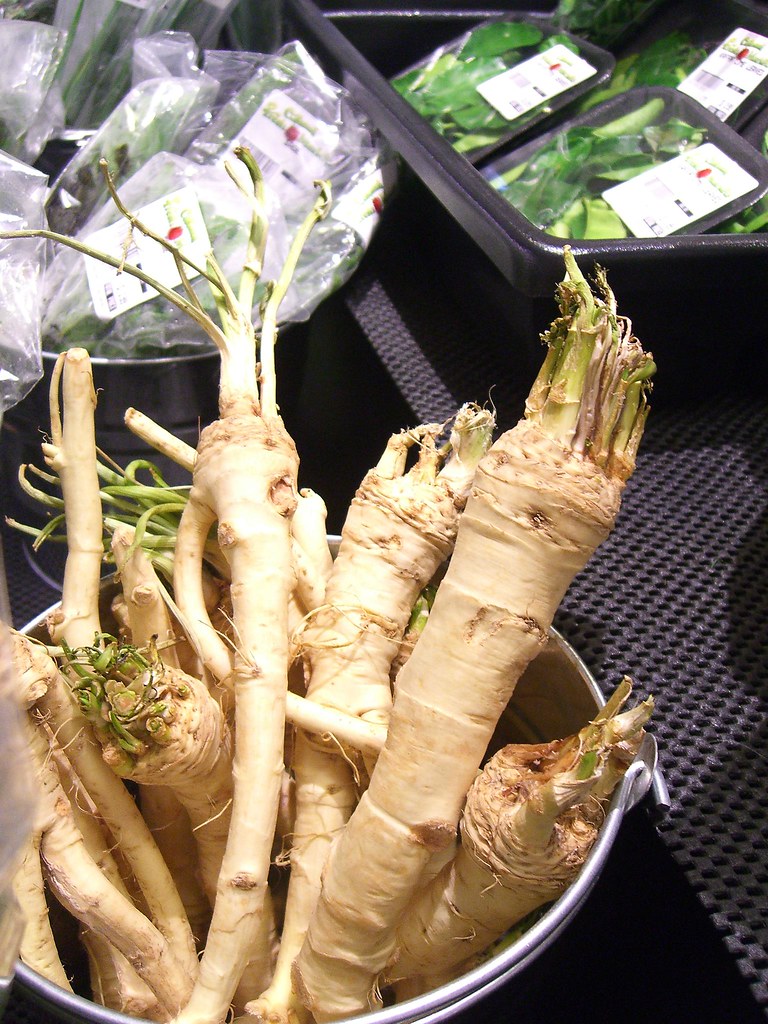
Horseradish (Armoracia rusticana) is a perennial root vegetable known for its robust and spicy flavor. Its distinct heat adds a kick to sauces, marinades, and various dishes, making it a valuable crop for those who enjoy bold flavors. October is an excellent time to plant horseradish crowns in Florida, as the plant establishes itself in the cooler weather and can be harvested during the subsequent growing season.
To successfully plant horseradish, begin by selecting a location with plenty of sunlight and loose, well-draining soil. Horseradish prefers a soil pH of 6.0 to 7.0, so testing and adjusting your soil in advance can lead to a better crop. Plant horseradish crowns, which are pieces of the root, about 2-4 inches deep and spaced about 12-24 inches apart. This distance allows room for the roots to grow and prevents overcrowding.
Watering is crucial during the initial stages after planting; however, once established, horseradish is relatively drought-tolerant. Mulching around the plants can help regulate soil temperature and moisture. Because horseradish can spread aggressively, it’s advisable to confine it to a specific area of the garden or to plant it in raised containers to control its growth.
Typically, horseradish is ready to harvest about 12 months after planting, although you can begin lightly harvesting the roots by mid-fall if necessary. To do so, loosen the soil around the roots before carefully pulling them up. The roots can be grated fresh to make homemade horseradish sauce, or they can be preserved through pickling for use in future dishes.
Kale

Kale is a powerhouse green known for its nutritional benefits, being laden with vitamins A, C, K, and various antioxidants. As a cold-tolerant leafy green, kale thrives in Florida during the fall months and can be sown in October for a harvest that lasts throughout the winter and into early spring. Its versatility extends beyond salads; it can be included in soups, sautéed, or blended into smoothies.
For successful kale cultivation, choose a site that receives full sun to partial shade, with well-draining, fertile soil enriched with organic matter. When preparing the soil, incorporating compost contributes to nutrient availability and moisture retention. Sow the seeds directly into the garden about ½ inch deep, spacing them 12-18 inches apart to accommodate their eventual spread.
Kale is a relatively low-maintenance crop, but consistent watering is essential, especially in the early stages of growth. Mulching can help keep the soil moist and suppress weeds, allowing the kale to thrive without competition. Additionally, keeping an eye out for pests like aphids and caterpillars can help ensure your plants grow strong and healthy.
You can expect to harvest kale approximately 50-75 days after planting, depending on the variety. One of the great aspects of kale is its ability to be harvested continuously; you can take the outer leaves while allowing the inner leaves to grow for future harvests. Whether enjoyed fresh in salads, sautéed as a side dish, or baked into crispy kale chips, kale is an incredibly adaptable green.
Kohlrabi
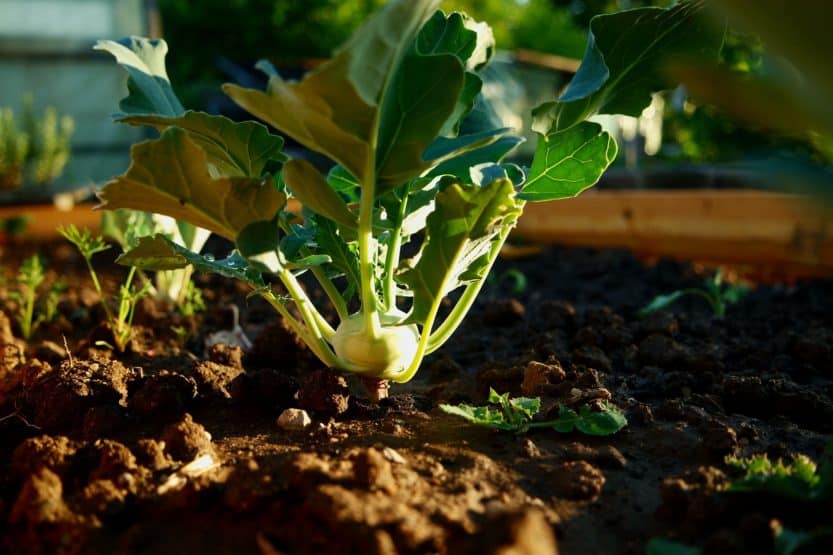
Kohlrabi, a unique member of the brassica family, is often overlooked but deserves a place in every Florida garden. Known for its bulbous stem and crunchy, mild flavor, kohlrabi is versatile in the kitchen and can be eaten raw or cooked. October is an ideal time to plant this hardy vegetable in Florida, as the cooler temperatures help develop its sweet, crisp texture.
To plant kohlrabi successfully, choose a location with full sun and well-draining soil enriched with compost. This vegetable prefers a soil pH between 6.0 and 7.0 to promote optimal growth. Sow seeds about ½ inch deep and space them approximately 6-8 inches apart to allow the bulbs ample room to grow. If you prefer to start with transplants, plant them at a similar depth and spacing.
Kohlrabi benefits from consistent watering, particularly during dry spells, as moisture is essential for bulb development. Mulch around the base can help retain soil moisture and suppress weeds, creating a stable environment for the plants. Additionally, keeping an eye out for common pests such as cabbage loopers and flea beetles can help secure a healthy harvest.
Kohlrabi is typically ready to harvest within 60-70 days from planting, when the bulbs reach 3-4 inches in diameter. The bulbs can be enjoyed raw in salads, sliced into sticks for dipping, or cooked in stir-fries and soups. The tender greens are also edible and can be sautéed or used in salads for added nutrition and flavor.
Lettuce
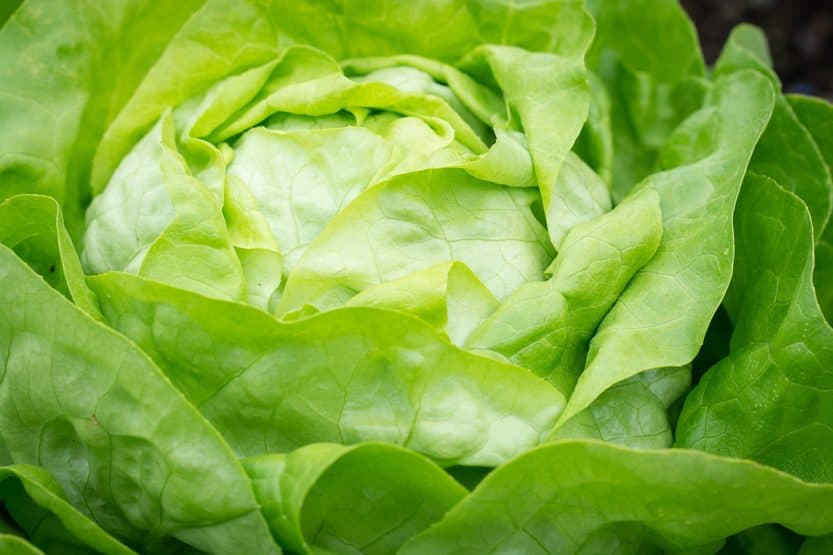
Lettuce is a favorite among home gardeners, providing fresh greens for salads and sandwiches throughout the fall and winter months. With numerous varieties available, lettuce can add both color and texture to your garden. October marks the perfect time to plant lettuce in Florida, as the cooler weather discourages bolting and promotes tender, flavorful leaves.
To grow lettuce successfully, select a well-draining, fertile site that receives partial shade, especially in Florida’s warmer areas. Preparing the soil by incorporating compost will enhance nutrient content and improve moisture retention. Sow lettuce seeds roughly ¼ inch deep, spacing them according to the variety you choose. Leaf varieties can be spaced closer together, while head types need more room between plants.
Lettuce requires consistent moisture for optimal growth. Watering should be done regularly, ensuring that the soil remains consistently damp but not waterlogged. Using mulch not only helps retain moisture but also keeps weeds from competing for nutrients, allowing your lettuce to flourish.
Depending on the variety, lettuce can typically be harvested within 30-60 days. Leaf varieties can be harvested by selectively picking outer leaves, while head types should be harvested when fully formed. Freshly harvested lettuce is perfect for salads, sandwiches, and garnishes, enhancing meals with its crispy texture and subtle flavors.
Mizuna
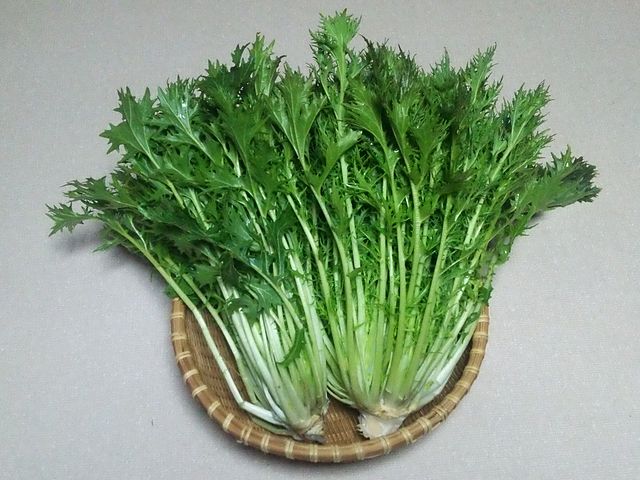
Mizuna, a leafy green native to Asia, has gained popularity among gardeners for its mild, peppery flavor and striking serrated leaves. This versatile crop thrives in cool weather, making October the perfect month to sow seeds in Florida, where the climate allows for continuous growth during fall and winter.
To cultivate mizuna, choose a location with full sun and well-draining soil that has been enriched with organic material. Mizuna prefers a slightly acidic to neutral pH, ideally ranging from 6.0 to 7.5. Sow seeds directly into the garden about ¼ inch deep, spacing them roughly 4-6 inches apart to allow ample room for growth.
Regular watering is key for mizuna, as it thrives in consistently moist soil. Installing a layer of mulch can assist in retaining soil moisture and suppressing weeds. Mizuna is known for being relatively pest-resistant; however, it’s still important to monitor for aphids or leaf miners, which can sometimes pose a threat.
Mizuna is typically ready for harvest within 30-40 days after planting. You can enjoy mizuna leaves raw in salads or sandwiches, or you can sauté them lightly for a delicious side dish. This leafy green is not only nutritious, packed with vitamins A and C, but also adds a unique flavor and texture to diverse culinary creations, making it a prized addition to your fall garden.
Potatoes
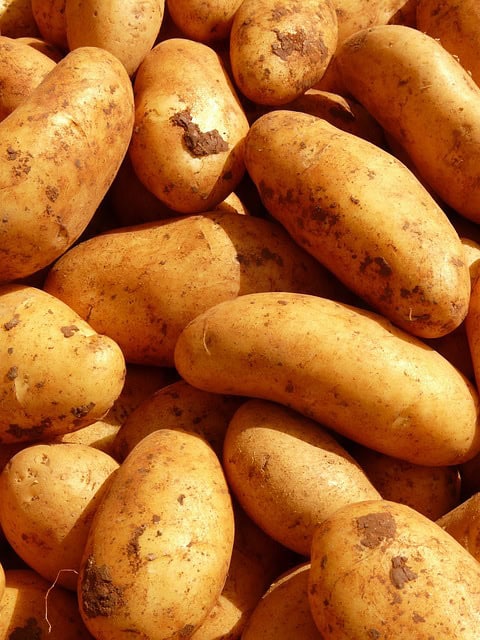
Potatoes are a staple vegetable around the globe, beloved for their versatility and hearty nature. Planting them in October is a strategic choice for Florida’s autumn season, allowing them to establish roots and develop tubers before the region’s cooler winter sets in. The state’s warm soil temperatures favor potato growth, providing a chance for gardeners to enjoy a successful crop.
To plant potatoes, begin by selecting seed potatoes from a reputable source, ensuring they are disease-free and certified. Cut larger seed potatoes into pieces, each with at least one eye, and allow them to heal for a day before planting to prevent rot. Choose a sunny spot with well-draining, loose soil. Plant the seed pieces about 4 inches deep and space them 12 inches apart.
Regular watering is essential, particularly as the tubers start to form. Potatoes thrive when kept consistently moist and benefit from hilling—adding soil around the plants as they grow, which encourages better tuber development and prevents them from being exposed to sunlight, which can turn them green and toxic.
You can expect to harvest your potatoes roughly 70-90 days after planting, depending on the variety. Early varieties may be ready sooner, while late-season types could take longer. When you notice the foliage begins to yellow and die back, it’s a sign that the potatoes are ready. Harvesting can be done by carefully digging up the plants with a fork or spade, taking care not to damage the tubers. Potatoes are fantastic in a wide range of dishes—from mashed and roasted to incorporated in salads.
Pumpkins
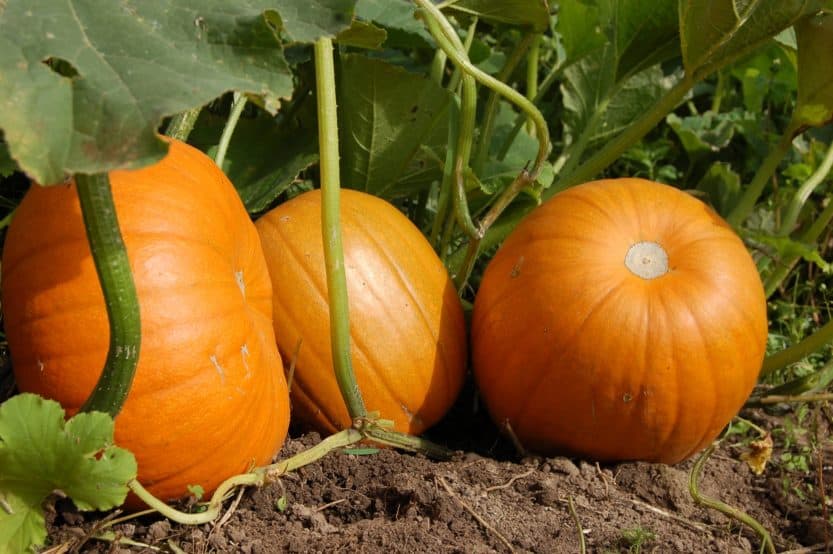
October isn’t just a popular month for planting; it’s also synonymous with pumpkin season! These iconic squashes are celebrated for their vibrant color and connection to fall festivities, especially Halloween and Thanksgiving. Florida’s warm climate allows for a unique opportunity to plant pumpkins in October, yielding a bountiful crop in time for harvest when the temperatures are still pleasant.
When planting pumpkins, it’s crucial to start with high-quality seeds, ideally the variety suited for your specific culinary or decorative needs. Choose a sunny location with well-draining soil, amended with organic matter like compost to give the plants a nutrient-rich environment. Plant seeds about 1 inch deep, spacing them 3-6 feet apart, depending on the variety and whether you intend to let them spread or grow vertically on a trellis.
Pumpkins require consistent watering, particularly during flowering and fruit set, which can be challenging in drier conditions. Mulching can help retain soil moisture and prevent weed competition. Regularly checking for common pests such as squash bugs and cucumber beetles is important, as they can significantly impact pumpkin plants.
Typically, pumpkins will take about 90-120 days to mature, depending on the variety. You can harvest them once they reach their desired size, the stems begin to dry out, and the exterior skin turns a deep orange. They can be used in a multitude of ways, from traditional fall recipes like pumpkin pie to decorative displays that encapsulate the spirit of the season.
Radish
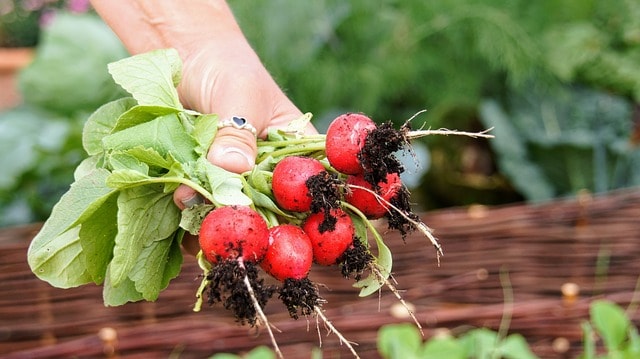
Radishes are one of the fastest-growing crops you can plant in your October Florida garden, making them an excellent choice for gardeners looking to maximize their yield in a short time. Known for their crisp texture and peppery flavor, radishes can be eaten raw in salads, pickled, or roasted, adding a delightful zing to dishes.
To plant radishes, select a variety suited to your taste preferences, whether it’s the classic red globe or a unique heirloom type. They thrive best in well-draining soil with good fertility, so amend your garden bed with compost before planting. Radish seeds should be sown directly into the soil about ½ inch deep, spaced approximately 1 inch apart in rows that are about 12 inches apart.
One of the great features of radishes is their low water requirement; however, they still benefit from consistent moisture, especially during their rapid growth phase. Regular watering and mulching can encourage better root development and deter weeds. Keep an eye out for potential pests like radish maggots and aphids, which can negatively affect the crop.
Most radish varieties can be harvested within 25-45 days after planting, when the roots attain a size you find desirable—usually around 1 inch in diameter. They should be pulled promptly to prevent them from becoming too woody. Fresh radishes are fantastic in salads for their crunch and spice, while the greens can also be used in pesto or sautéed for added nutrition.
Rapini
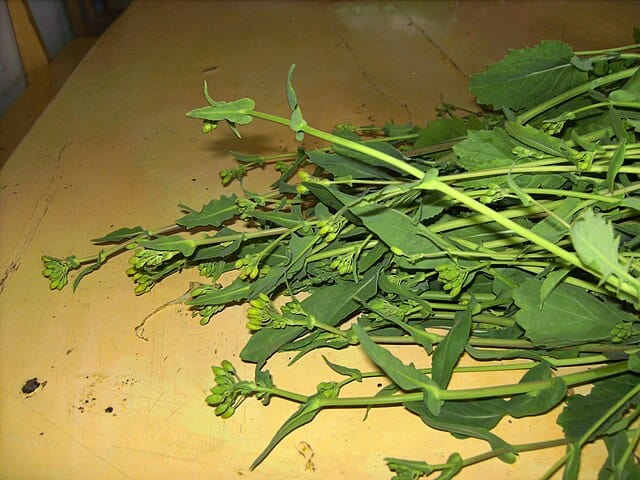
Rapini, also known as broccoli rabe, is a nutrient-packed leafy green vegetable that is often highlighted for its slightly bitter, earthy flavor profile. This fast-growing plant is an excellent choice for October planting in Florida, where the cooler weather can enhance its taste and tenderness. With a rich history in Italian cuisine, rapini is often enjoyed steamed, sautéed, or incorporated into pastas and grain dishes.
When planning to grow rapini, choose a site that receives full sun and has well-draining, nutrient-rich soil. It performs best at a pH of 6.0 to 7.0, so consider testing your soil beforehand. Sow seeds directly into the garden about ¼ inch deep and spaced 6-8 inches apart in rows roughly 18 inches apart. This spacing allows ample room for the plants to mature and develop their characteristic leafy florets.
Rapini thrives in cool temperatures, and regular watering is essential, especially during dry spells to ensure robust growth. It can be beneficial to apply a layer of mulch around the plants to help conserve moisture and suppress weeds. Additionally, keeping an eye on pests, such as aphids and flea beetles, will be key to safeguarding the plants.
Typically, rapini can be harvested 60 to 90 days after planting when the florets are still tight and young, just before they begin to flower. It’s a crop meant to be harvested young, as older plants can become tough and bitter. The greens and az florets can be sautéed with garlic and red pepper flakes for a delicious and healthy side dish or mixed into omelets for added flavor and nutrition.
Rosemary
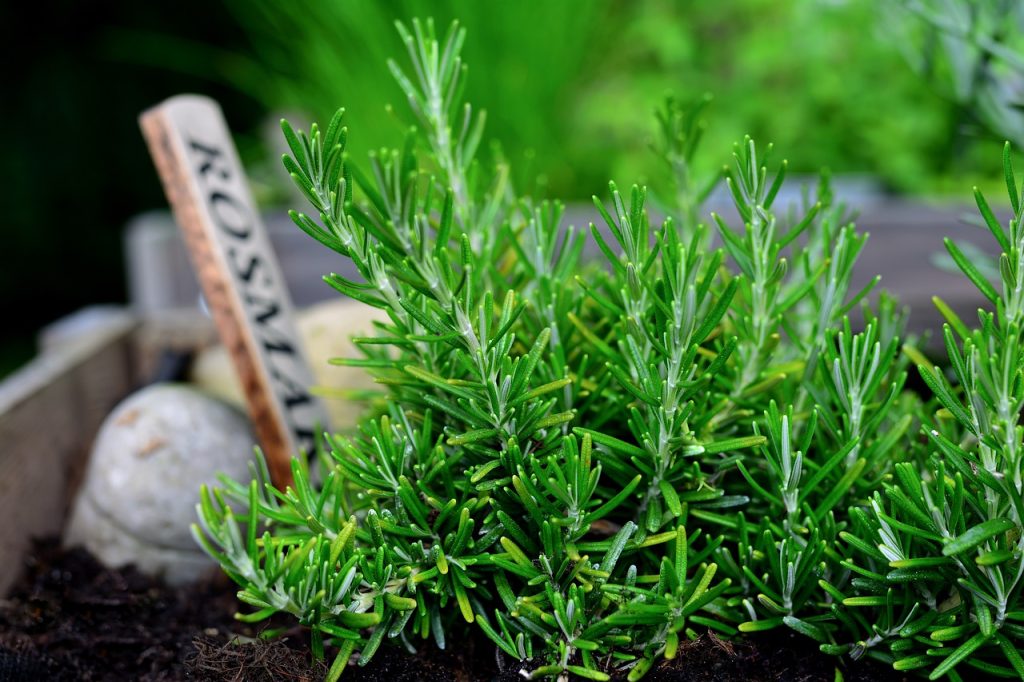
Rosemary is a perennial herb prized for its aromatic leaves and versatility in the kitchen. This hardy herb can improve dishes with its distinctive flavor and is also noted for its numerous health benefits. October is a great time to plant rosemary in Florida, as it can be established just before cooler temperatures help it thrive in the upcoming months.
To grow rosemary successfully, choose a sunny location with well-draining soil, ideally sandy or loamy with a pH between 6.0 and 7.5. Rosemary prefers drier conditions, so avoid heavy, water-retaining soils. Plant young seedlings or cuttings about 12-24 inches apart to allow for mature growth. If you’re starting from seeds, sow them shallowly and cover lightly with soil, as rosemary seeds require light for germination.
Watering should be done judiciously; rosemary is drought-tolerant once established, but consistent moisture during the initial growth phase will help with rooting. Mulching can help maintain soil temperature and moisture. Pruning after the plant matures can promote bushier growth and allow for continued harvesting.
You can start to harvest rosemary once the plant has established roots and grown sizeable stems, usually within a few months. Snipping off sprigs encourages new growth, and the leaves are ideal for flavoring roasted meats, vegetables, and salads. Additionally, rosemary’s aromatic properties make it a popular choice for infused oils and vinegars, enhancing both culinary creations and home remedies.
Salsify
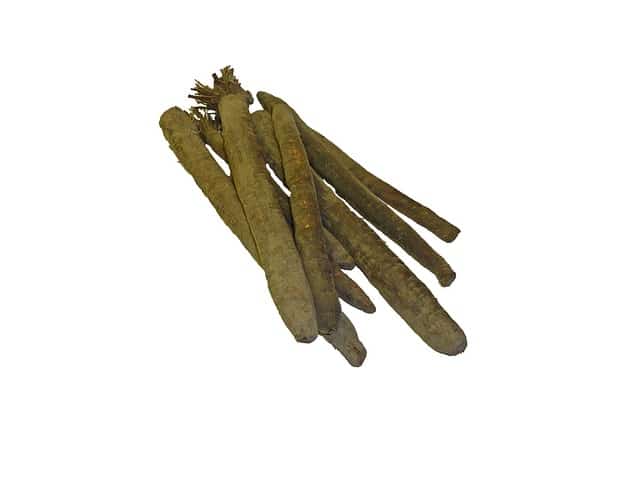
Salsify, often referred to as the “oyster plant” due to its unique flavor, is a lesser-known root vegetable that deserves a spot in your October planting schedule. This biennial crop, which resembles a long, slender carrot, offers a delicate taste reminiscent of artichokes or oysters when cooked. It’s a versatile vegetable that can be incorporated into soups, stews, or served as a standalone side dish.
Growing salsify requires a bit of patience, but its creamy, nutty flavor makes it worthwhile. Choose a location with full sun and well-draining soil that has been amended with compost. Salsify prefers loose soil—similar to carrots—so be sure to remove any rocks or debris that might inhibit root growth. Sow the seeds about ½ inch deep and spaced 3-4 inches apart in rows 12-18 inches apart.
Watering is crucial for seed germination and the establishment of young plants. Keep the soil evenly moist throughout the growing season, particularly during dry spells. Mulching can assist in retaining moisture and preventing weeds from encroaching on the delicate roots. Salsify is generally resilient against pests; however, you should still remain vigilant of issues such as root maggots.
Salsify can be harvested 90-120 days after planting, once the roots have reached a decent size—typically around 6-8 inches long. The roots should be carefully dug up to avoid breaking, and they can be coated in a layer of dirt until you are ready to use them.
Spinach
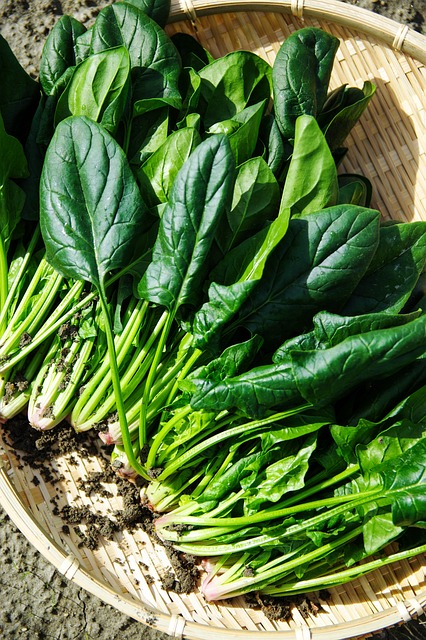
Spinach is a cool-season leafy green that thrives in Florida’s milder fall temperatures. Rich in vitamins A, C, and K, this nutrient-dense vegetable is a fantastic addition to any garden. Planting spinach in October allows gardeners to take advantage of the ideal conditions for germination and growth, leading to healthy and vibrant crops.
For successful spinach growth, select a location that receives full sun to partial shade. Spinach prefers soil that is rich in organic matter and has a pH between 6.5 and 7.5. Prior to planting, amend the soil with compost or well-rotted manure to promote fertility. Sow spinach seeds about ½ inch deep, spacing them 2 inches apart in rows that are 12-18 inches apart. If you plan to grow multiple crops throughout the season, you can even stagger your planting every few weeks for continuous harvest.
Watering is critical, particularly during dry spells, as spinach needs consistent moisture to develop tender leaves. Applying mulch around your plants can help retain soil moisture while warding off weeds. Spinach is generally pest-resistant, but keep an eye out for aphids and spider mites, which can affect crop health.
Typically, spinach can be harvested in about 30-45 days after sowing. You can choose to harvest the outer leaves first, encouraging the plants to continue producing new ones, or cultivate the entire plant when it reaches a size you find desirable. Spinach can be used fresh in salads, sautéed as a side dish, or blended into smoothies, making it a highly versatile and valuable vegetable in your kitchen.
Strawberry Crowns
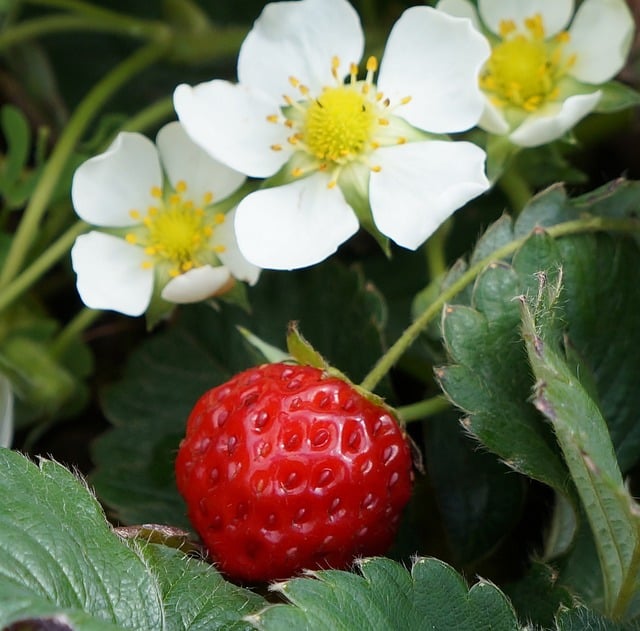
October is an ideal time for planting strawberry crowns in Florida, as it aligns perfectly with the cooler weather that encourages strong root development. Strawberries are not only delicious but also rich in antioxidants and vitamin C, making them a cherished fruit among gardeners and food enthusiasts alike.
When preparing to plant strawberry crowns, select a well-draining site with at least six to eight hours of sunlight daily. Ideal soil should be enriched with organic material and have a pH of 5.5 to 6.8. Site preparation is crucial—loosen the soil and amend it with well-rotted compost or aged manure prior to planting. Space the strawberry crowns about 12-18 inches apart in rows spaced 3 feet apart. Ensure that the crown (the thick part of the stem where the roots meet) sits just above the soil line to promote healthy growth.
Regular watering is vital, especially during dry spells, as strawberries need consistent moisture to thrive. Drip irrigation is often recommended to provide gentle hydration without waterlogging the plants. Mulching around the base of the plants can help suppress weeds, retain moisture, and protect the fruits from soil-borne diseases.
Typically, you can expect your strawberry plants to produce fruit in the spring, about 4-6 months after planting. The first harvest is usually the most abundant, with additional smaller flushes throughout the season. Fresh strawberries are delightful on their own, in desserts, or incorporated into salads, making them a constant favorite during warm weather and beyond.
Summer Squash
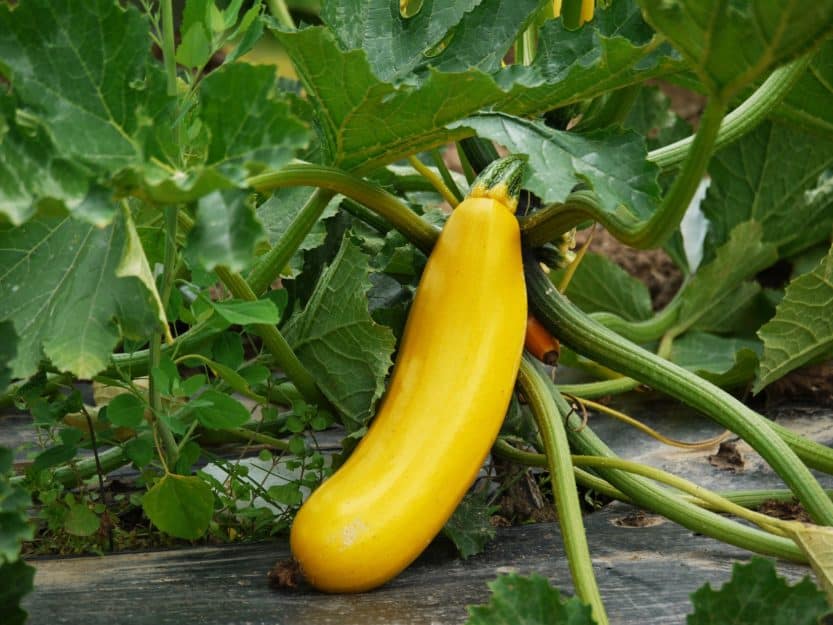
Although commonly associated with summer gardening, certain varieties of summer squash, such as zucchini and yellow squash, can also be planted in October for a fall harvest in Florida. These crops are known for their fast growth and prolific yield, providing versatile ingredients for a variety of meals.
For optimal success, choose a sunny location with well-draining soil enriched with organic matter. Summer squash prefers a slightly acidic to neutral pH, ideally around 6.0 to 7.0. Sow seeds directly into the ground about 1 inch deep and space them 2-3 feet apart in rows, allowing ample room for the plants to spread as they grow.
Regular watering will be essential, especially during dry periods, as summer squash thrives on consistent moisture. Mulching around the plants will help retain soil moisture and control weeds, ultimately promoting healthier growth. Keep an eye out for potential pests such as squash vine borers and aphids, both of which can impact yield if not managed.
Depending on the variety, summer squash can be harvested around 50-70 days after planting. The best time to pick is when the fruits are young, tender, and still small, as this results in the most flavorful harvest. Squash can be used in numerous ways—sautéed, grilled, steamed, stuffed, or even spiralized into “noodles,” showcasing its versatility in the kitchen.
Thyme
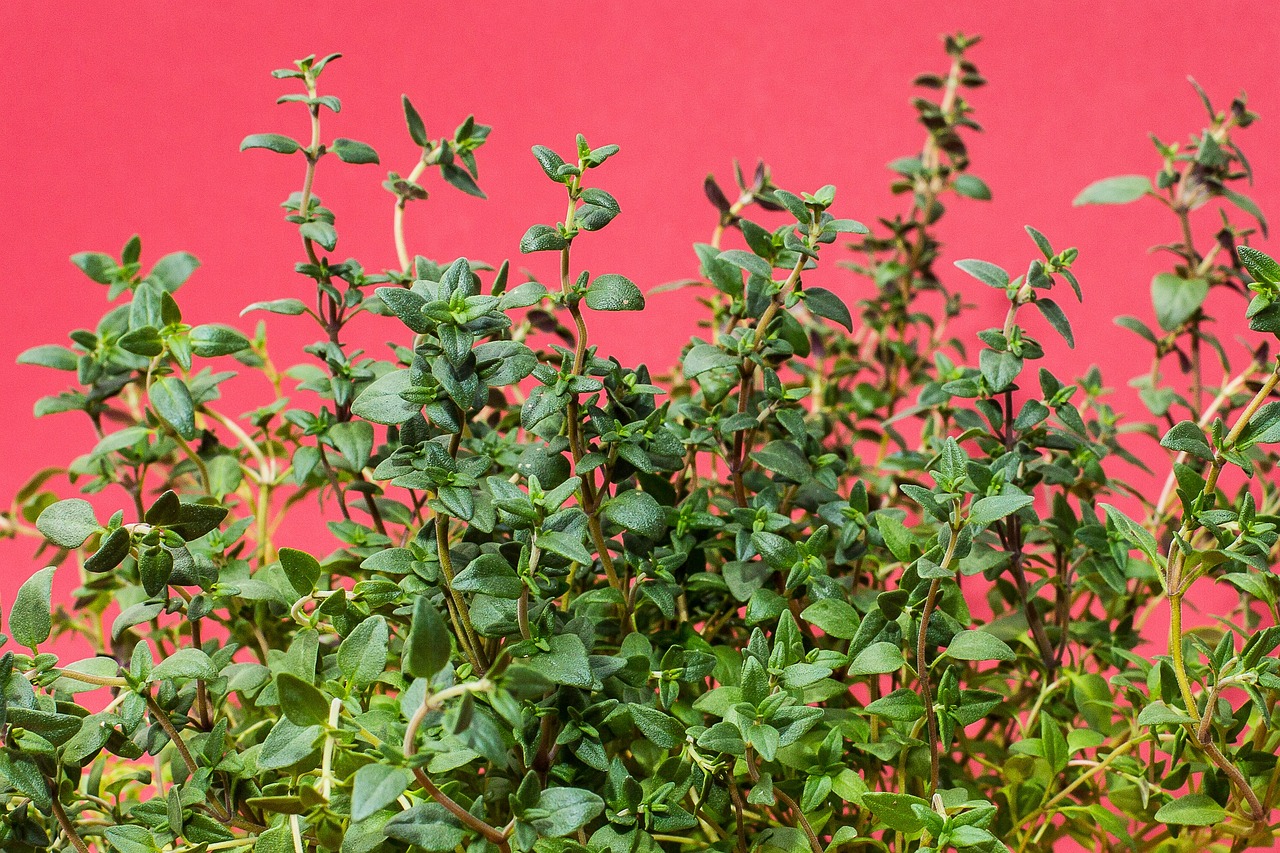
Thyme is a perennial herb revered for its aromatic leaves and culinary versatility. It thrives in Florida’s warm climate, making October an excellent time to plant this flavorful herb. Apart from being a staple in many dishes, thyme is well-regarded for its medicinal properties, which include antioxidant and antibacterial effects.
To successfully grow thyme, start by selecting a location that receives full sun for at least six hours a day. Thyme prefers well-draining, sandy, or loamy soil with a pH between 6.0 and 8.0. Before planting, incorporating organic matter like compost helps create an ideal growing medium. You can either sow seeds directly in the soil or start with established plants by spacing them about 12-18 inches apart to allow for eventual spreading.
Regular watering is essential, especially during the early growth stage, but be cautious not to overwater as thyme is drought-tolerant once established. Allow the soil to dry out between waterings to prevent root rot. Thyme is relatively pest-resistant but may occasionally attract aphids and spider mites; maintaining proper air circulation can mitigate these issues.
Harvesting typically starts after a few months once the plants reach mature size. Snipping off stems encourages fuller growth and can be done throughout the year, making thyme a continually rewarding herb. Whether in marinades, dressings, or as a seasoning for roasted meats and vegetables, thyme enhances flavors beautifully without overpowering them.
Tomatoes
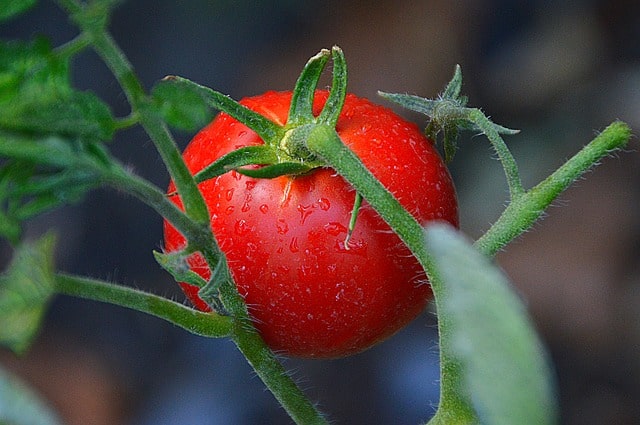
Tomatoes, a favorite among gardeners and cooks alike, are a quintessential crop for Florida during October. Planting tomatoes in the fall allows for a productive growing season that can last until early spring, which is especially beneficial in the subtropical climate of Florida. Known for their rich taste, tomatoes are rich in vitamins C and K, making them a nutritious addition to your diet.
Selecting the right variety is crucial, as Florida’s heat and humidity can affect tomato growth. Indeterminate varieties like ‘Cherokee Purple,’ ‘Brandywine,’ or ‘Sweet 100’ are popular choices that continue to produce fruit throughout the season. For planting, choose a sunny spot with well-drained, fertile soil, ideally amended with compost to enhance nutritional content.
When planting, dig holes deep enough to bury two-thirds of the stem, which promotes stronger root development. Space plants 18-24 inches apart in rows that are 3-4 feet apart to allow for airflow and sun exposure, vital for fruit ripening. Water regularly, focusing on consistent moisture without allowing water to pool around the roots, which can lead to rot.
Be on the lookout for common pests such as aphids, whiteflies, and tomato hornworms. Employing organic pest control methods, like introducing beneficial insects or using insecticidal soap, can help keep these threats at bay. With proper care, you can expect to start harvesting tomatoes within 60 to 90 days, enjoying them in salads, sauces, or as fresh toppings.
Turnips
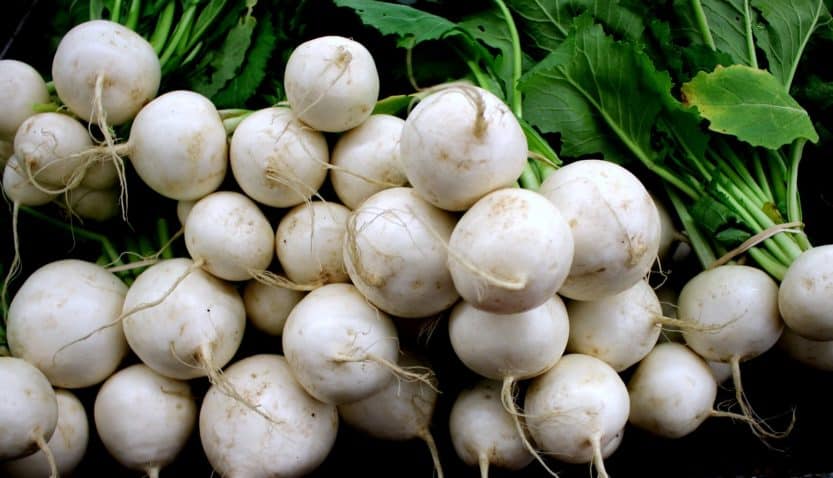
Turnips are a hardy root vegetable that thrive in cooler months, making October planting ideal in Florida. Known for their mild, slightly sweet flavor, these versatile vegetables can be enjoyed raw, roasted, or mashed and are rich in vitamins C and K, fiber, and several essential minerals.
To successfully grow turnips, select a sunny area with well-draining, fertile soil. Turnips can tolerate a range of soil pH, but they grow best in slightly acidic to neutral conditions (pH 6.0 to 7.0). Sow seeds directly into the garden at a depth of about ½ inch, spacing them 1-2 inches apart in rows that are 12-24 inches apart. This spacing allows for the proper development of the roots.
Watering is crucial during the germination phase and early growth. Keep the soil consistently moist but not soggy to promote healthy development. Turnips are relatively resilient to pests, although you should watch for root maggots and flea beetles. Using row covers can provide protection in the early stages of growth.
Typically, turnips will be ready for harvest within 30-60 days after planting, depending on the variety and desired size. Harvesting when the roots are still young and tender yields the best flavor and texture. Additionally, the leafy greens can also be harvested and cooked or added to salads, providing a zero-waste approach to your cropping efforts.
Watermelons
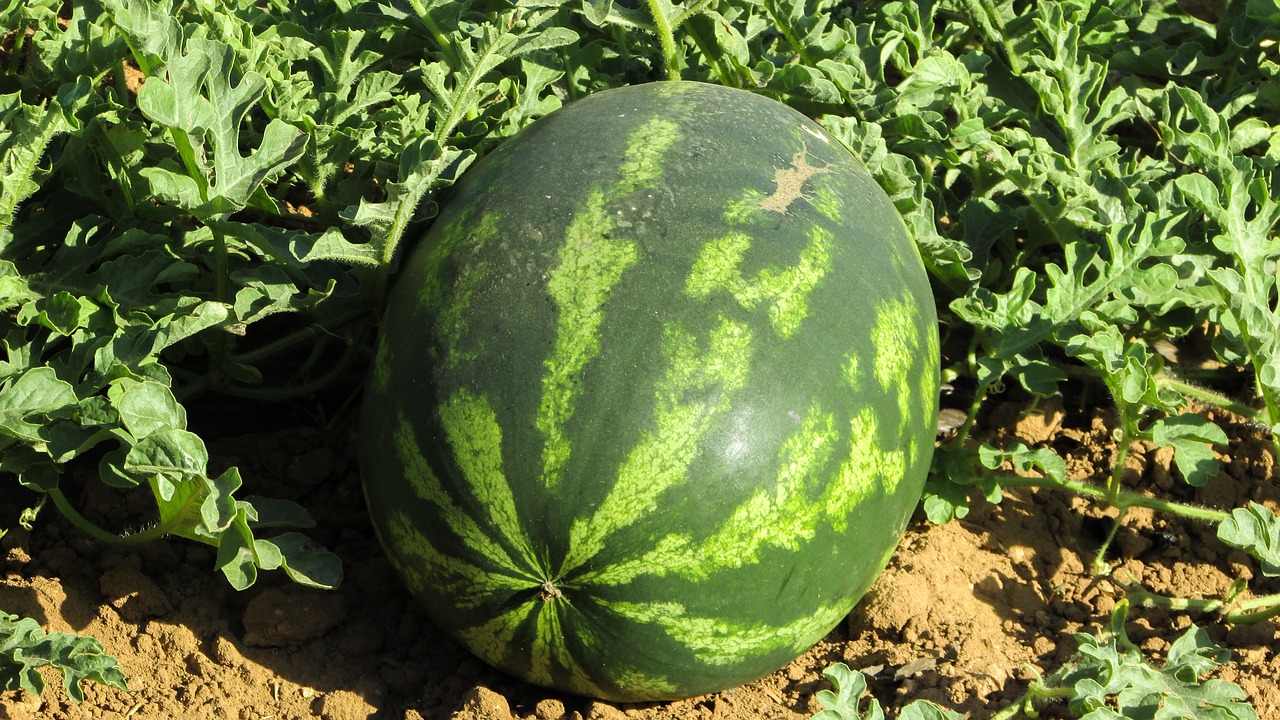
While watermelons are typically associated with summer, Florida’s mild fall climate provides a unique opportunity for planting this beloved fruit in October. With the right variety and care, gardeners can enjoy a delightful harvest before the winter chill sets in. Watermelons thrive in warm temperatures, making October a beneficial time to start seeds indoors, or to transplant seedlings into the garden where the soil is still warm.
To plant watermelons, select a sunny spot with well-draining, nutrient-rich soil. Sandy-loam soils work best, with a pH between 6.0 and 6.8. If planting from seeds, create hills about 3 feet apart and plant four to six seeds per hill, about an inch deep. Once seedlings emerge, thin them to the strongest two or three per hill.
Watermelons require consistent moisture, especially during fruit development, so regular irrigation is critical. Avoid overhead watering to minimize the risk of diseases; instead, opt for drip irrigation or soaker hoses. As plants grow, consider adding mulch to the base to retain moisture, regulate soil temperature, and suppress weeds.
Most watermelon varieties will mature in roughly 70-90 days, so plan your planting schedule accordingly to ensure a harvest before the first cool fronts arrive. Look for signs of ripeness, like a hollow sound when tapped and a yellowish spot where the fruit sits on the ground. Freshly harvested watermelons can be enjoyed on their own, in salads, or as refreshing drinks, making them a seasonally treasured treat.
Flowers
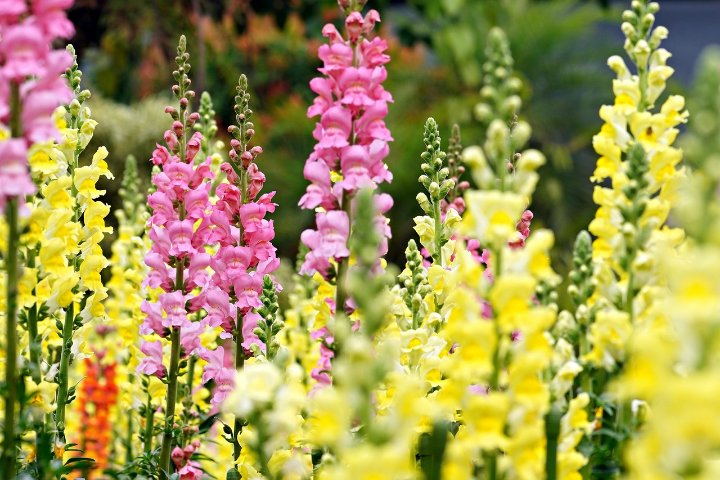
October is also the perfect time to plant a variety of flowers that will bloom brilliantly during Florida’s winter and spring seasons. Cool-season flowers thrive in the moderate temperatures of fall, creating stunning displays of color and fragrance across landscapes. Popular choices for planting in October include pansies, snapdragons, and petunias, all of which can withstand the slight chill and will flourish as the weeks progress.
When selecting flowers to plant, it’s essential to consider the garden’s light conditions and soil type. Most cool-season flowers prefer full sun—at least six hours of direct sunlight—but some also tolerate partial shade. To prepare for planting, amend the soil with organic matter, such as compost, to boost both drainage and nutrient content.
Plant seedlings or seeds as specified on the packets, usually one to two feet apart to allow for proper air circulation and growth. Regular watering is essential but be mindful of over-watering, as many flowers do not appreciate soggy soil conditions. Mulching can assist with moisture retention and improve the aesthetic of the garden beds.
The beauty of planting flowers in October is watching them thrive through the cooler months, providing vibrant displays that can brighten outdoor spaces. These blooms will attract beneficial pollinators and can be cut for indoor arrangements, enhancing both your garden’s beauty and the surrounding ecosystem.
Trees

Planting trees in October, particularly in Florida, can offer substantial long-term benefits to your property and environment. Fall is an optimal time for establishing trees because the cooler weather supports root development while reducing stress on young plants. Consider selecting native trees or those well-adapted to the region, such as live oaks, red maples, or southern magnolias. These species not only contribute to biodiversity but also provide essential habitats for local wildlife.
When planting trees, it’s crucial to select a location that allows for adequate space for growth—both above and below ground. Dig a hole that is twice as wide and just as deep as the root ball, ensuring that the soil is loose enough to promote root expansion. Incorporating organic matter helps create a nutrient-rich environment that fosters healthy growth.
After planting, regular watering is vital, especially during the first few growing seasons. Newly planted trees need consistent moisture to establish a strong foundation; consider using a watering bag to facilitate slow, deep watering. Additionally, applying mulch around the base of the tree can help retain moisture, suppress weeds, and provide insulation against temperature extremes.




